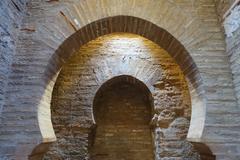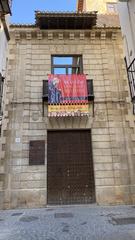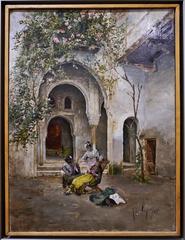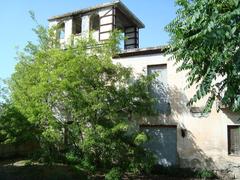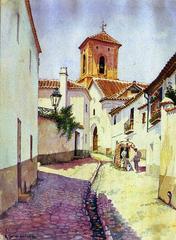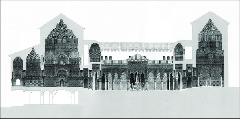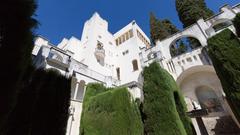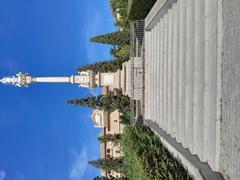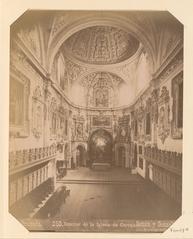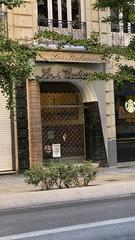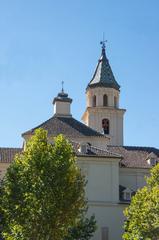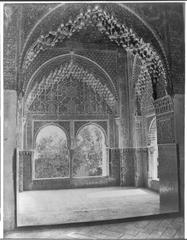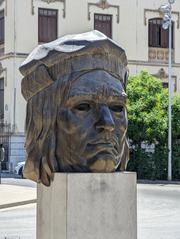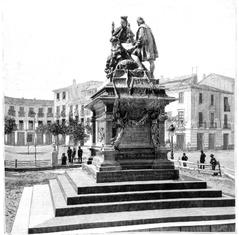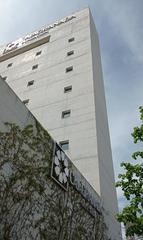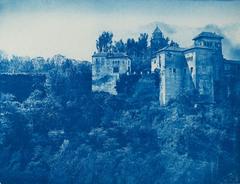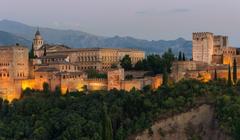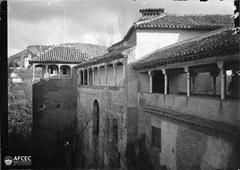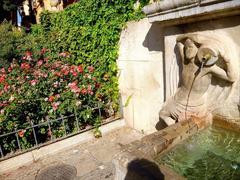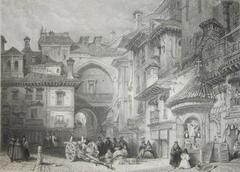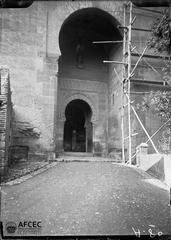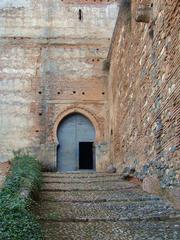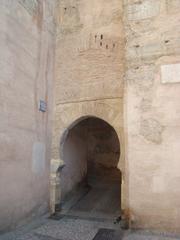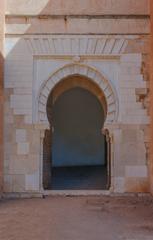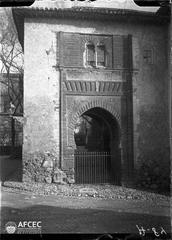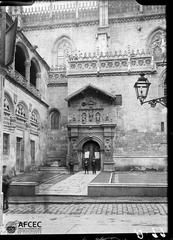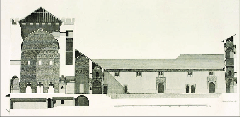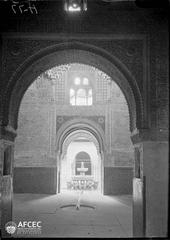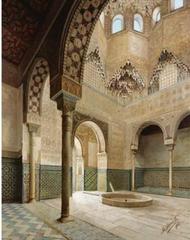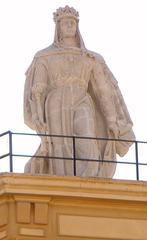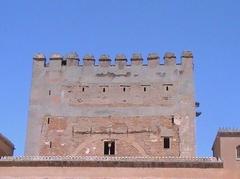Fuentes del Bosque de la Alhambra: Visiting Hours, Tickets, and Historical Sites in Granada
Date: 14/06/2025
Introduction to Fuentes del Bosque de la Alhambra in Granada
Tucked within the iconic Alhambra complex, the Bosque de la Alhambra and its renowned Fuentes del Bosque de la Alhambra (Fountains of the Alhambra Forest) stand as living testaments to Granada’s blend of natural beauty, rich history, and architectural mastery. This lush woodland, interwoven with sophisticated fountains and water channels, reflects centuries of cultural evolution—from its origins as a military fortress atop Sabika Hill during the Roman era to its transformation under the Nasrid dynasty into a palatial city and symbol of paradise. The Bosque and its fountains not only embody Islamic art’s reverence for water as life and purity but also display advanced hydraulic engineering that harnessed the Darro River through the Acequia Real to sustain lush gardens and provide cooling relief (The Culture Explorer; The Geographical Cure).
Today, visitors can explore a living museum boasting more than 300 plant species, remarkable fountains such as the Fuente de los Leones and Fuente del Tomate, and shaded walking paths leading to the palatial heart of the Alhambra. The forest’s design and use have evolved through periods of Christian reconquest, Renaissance landscaping, and modern conservation, culminating in its UNESCO World Heritage Site designation. Whether you seek tranquility amid nature, the artistry of Moorish water features, or echoes of the poetic gatherings once held here, the Bosque de la Alhambra offers a singular experience for history buffs, nature enthusiasts, and cultural travelers alike (Visit Andalucia; Earth Trekkers; Rincones de Granada).
This guide provides essential information on visiting hours, tickets, accessibility, recommended routes, and tips for appreciating the beauty of the Bosque and its fountains, along with highlights of nearby historical sites in Granada.
Historical Background of the Bosque de la Alhambra
Early Origins and Strategic Importance
The story of the Bosque de la Alhambra begins with the Alhambra itself, which originated as a military outpost during the Roman era due to its commanding position overlooking the Darro and Genil valleys (The Culture Explorer). In 889 CE, Sawwar ibn Hamdun rebuilt a fortress atop these ruins, laying the groundwork for the complex that would later become a palatial city (Visit Andalucia).
Nasrid Dynasty and Landscape Transformation
The Nasrid dynasty (13th–15th centuries) transformed the fortress into an opulent palatial city, integrating gardens, woodlands, and an advanced hydraulic system. This vision created the Bosque de la Alhambra as a space blending defense with beauty, reflecting the era’s ideal of a paradise on earth (Nomads Travel Guide; Ancient Engineering Marvels).
17th-Century Planting and Later Evolution
Formal reforestation began in the 17th century, introducing poplars, plane trees, acacias, Aleppo pine, and maples—some species dating to early Christian times (Nomads Travel Guide). These plantings enhanced the site’s natural beauty and seclusion.
Water and Hydraulic Engineering
A defining feature of the Bosque is its network of fountains and water channels, fed by the Darro River through the Nasrid-era Acequia Real. This system not only irrigates the gardens but also cools the air and fosters the tranquil soundscape for which the Alhambra is famous (Visitanddo.com; Ancient Engineering Marvels).
Post-Reconquista Modifications and Modern Conservation
Following the Christian conquest in 1492, the Alhambra and its Bosque underwent significant changes. The Catholic Monarchs introduced new features such as the Pilar de Carlos V fountain (1545), blending decorative and practical purposes (Rincones de Granada). After periods of neglect, restoration efforts in the 19th and 20th centuries revived the area, ultimately leading to its UNESCO World Heritage status in 1984 (Discovering Spain; Visit Andalucia).
Visiting the Bosque de la Alhambra: Practical Information
Visiting Hours and Tickets
The Bosque de la Alhambra is generally open year-round during daylight hours, with schedules varying seasonally. Typical hours match those of the Alhambra complex, from about 8:30 AM to 6:00–8:00 PM. Access to the Bosque itself is free and does not require a ticket, but entry to the Alhambra palaces and gardens does. Secure tickets for the palaces in advance via the official Patronato de la Alhambra y Generalife website or authorized vendors.
Accessibility
Most main paths in the Bosque are well-maintained, though some are steep or uneven, presenting challenges for visitors with mobility impairments. Wheelchair-accessible routes exist, but planning ahead and consulting visitor services is recommended.
Best Times to Visit
Spring (April–June) and autumn (September–November) offer pleasant temperatures and vibrant foliage. Early mornings and late afternoons provide optimal lighting, cooler weather, and fewer crowds (The Viva La Vita; Tricks and Trips).
Guided Tours and Cultural Events
Guided tours, often including the Bosque, offer historical and botanical insights. The forest also hosts occasional cultural and seasonal events—check local tourism websites for updates (Ancient Engineering Marvels).
Exploring the Fuentes del Bosque de la Alhambra: A Visitor’s Guide
Historical and Cultural Significance
Moorish Heritage and the Role of Water
The fountains of the Bosque are emblematic of Nasrid-era Islamic architecture, where water symbolized life, paradise, and technological prowess. Ingenious hydraulic systems drew water from the Darro River, creating tranquil, cool spaces in the arid Andalusian climate (The Geographical Cure).
Forested Landscape: A Living Legacy
The Bosque’s cypress, elm, and chestnut trees, together with iconic fountains like Fuente del Tomate and Fuente de los Leones, reflect centuries of cultural layering, preserved by both Nasrid and Christian rulers (Adventurous Miriam).
Artistic, Symbolic, and Social Dimensions
In Islamic art, water represents purity and renewal. The fountains’ traditional motifs and placements create multisensory experiences, historically serving as venues for poetry readings and philosophical gatherings (Earth Trekkers).
Visiting the Fuentes del Bosque de la Alhambra
- Hours: Typically 8:30 AM–8:00 PM (Apr–Oct), 8:30 AM–6:00 PM (Nov–Mar). Check the official site for updates.
- Entry: Access to the Bosque and its fountains is free; Alhambra palace and garden entry requires a ticket.
- Getting There: Main entrances via Puerta de las Granadas and Puerta de la Justicia.
- Accessibility: Paths are generally well-kept; some areas may be uneven. Facilities are available near main entrances.
- Photography: Early or late visits offer the best light; tripods may require special permission. Stay on marked paths and respect conservation rules.
Notable Fountains and Features
- Fuente de los Leones: Centerpiece of the Nasrid Palace’s Court of the Lions, featuring twelve marble lions and symbolic of strength and paradise (Andalucia Lovers).
- Fountain of the Court of the Myrtles: Elegant fountain set in a reflective pool, enhancing the harmony of the Comares Palace.
- Generalife Fountains: Renowned water stairways and rills, symbolizing the sultan’s mastery over nature (European Traveler).
- Fountains in the Bosque: Historic features such as Fuente del Pimiento, Fuente del Tomate, and Fuente Ángel Ganivet, each with unique stories and architectural styles (Rincones de Granada).
Layout, Flora, and Fauna
The Bosque features three principal walkways, all beginning at the Puerta de las Granadas, including the romantic “Bosque de Gomérez” avenue. The area is home to over 60 tree species and 300 types of plants, as well as a variety of birds and small mammals (Exclusive Granada). Statues, historic ruins, and seasonal color add to the experience.
Practical Tips for Visitors
- Recommended Duration: 1–2 hours for the Bosque; 2–3 hours with the palaces and gardens.
- What to Bring: Water, comfortable shoes, camera, weather-appropriate clothing.
- Early Arrival: Quieter paths and better lighting for photos.
- Combine Visits: Pair the Bosque with the Nasrid Palaces, Generalife Gardens, and the Albaicín for a holistic Granada experience.
Accessibility and Transportation
The Bosque is accessible from Plaza Nueva via Cuesta de Gomérez, with alternative routes from the Albaicín. Public transport serves the area well; parking is limited, so walking or using buses is recommended.
For mobility-challenged visitors, some accessible routes exist but may require assistance. Check with visitor services or opt for guided tours designed for accessibility.
Conservation and UNESCO Recognition
Managed by the Patronato de la Alhambra y Generalife since 1868, the Bosque is subject to ongoing conservation efforts to preserve both its botanical diversity and historical significance (Wikipedia).
Frequently Asked Questions (FAQ)
Q: Do I need a ticket to visit the Bosque de la Alhambra?
A: No, entry to the Bosque is free; Alhambra palaces and gardens require a ticket.
Q: What are the visiting hours?
A: Generally from 8:30 AM to sunset, with seasonal adjustments. Always check official sources prior to your visit.
Q: Are guided tours available?
A: Yes, often as part of comprehensive Alhambra tours. Look for current offerings with local tour operators.
Q: Is the Bosque accessible for wheelchair users?
A: Some paths are accessible, though others are steep or uneven. Plan ahead and consult visitor services.
Q: How do I reach the Bosque from the city center?
A: Main access is via Plaza Nueva and Cuesta de Gomérez. Buses and walking routes from the Albaicín are also options.
Summary and Visitor Tips
The Bosque de la Alhambra and its historic fountains are enduring symbols of Granada’s layered heritage—melding strategic origins, Nasrid artistry, Christian influences, and modern conservation. Visitors are encouraged to plan ahead, secure tickets for the palaces online, explore with guided tours, and visit during early or late hours for the best experience. For those with mobility needs, preparation is key. Pair your visit with neighboring sites like the Nasrid Palaces, Generalife Gardens, and the Albaicín to fully appreciate Granada’s cultural richness (Patronato de la Alhambra y Generalife; Turismo Granada).
Download the Audiala app for real-time updates, interactive maps, and exclusive tips to enhance your visit. Follow us on social media and explore related articles to make the most of your time in Granada.
Sources and Further Reading
- The Culture Explorer
- Visit Andalucia
- Nomads Travel Guide
- Ancient Engineering Marvels
- Visitanddo.com
- Rincones de Granada
- Discovering Spain
- The Geographical Cure
- Adventurous Miriam
- Earth Trekkers
- Andalucia Lovers
- European Traveler
- Andalucia360Travel
- Mundo Wanderlust
- Otros Caminos
- Patronato de la Alhambra y Generalife Official Website
- Turismo Granada
- Rincones de Granada (Bosque de la Alhambra)
- Exclusive Granada
- Wikipedia
- The Viva La Vita
- Tricks and Trips

